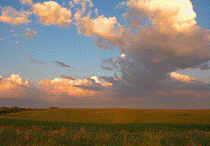
Proceedings of the North American Prairie Conferences
Date of this Version
1989
Document Type
Article
Abstract
Western prairie fringed orchid (Platanthera praeciara Sheviak and Bowles) populations at one time extended from southwestern Missouri north to northwestern Minnesota, and from eastern Iowa to the Sandhills of north central Nebraska. It is listed as endangered in Iowa and Minnesota and candidate for threatened or endangered status in Kansas, Missouri, Nebraska, North Dakota, Oklahoma, and South Dakota. The questions are, "Why has it declined in numbers?" How have uses such as mowing for hay or grazing by cattle or no use (control) affected the numbers? In 1987, permanently located individual plants were counted on the Sheyenne National Grasslands of southeastern North Dakota. Population trends of this orchid were compared regarding effects of mowing, grazing, and fire. The evaluation of the permanently located individual plants, and data on total counts per area in 1988 showed a difference between years and significant difference among grazed, mowed, or no use treatments. The western prairie fringed orchid appears very resilient, but more data will be needed to test this prognosis.


Comments
Published in Prairie Pioneers: Ecology, History and Culture: Proceedings of the Eleventh North American Prairie Conference, August 7-11, 1988, Lincoln, Nebraska (Lincoln, NE 1989).